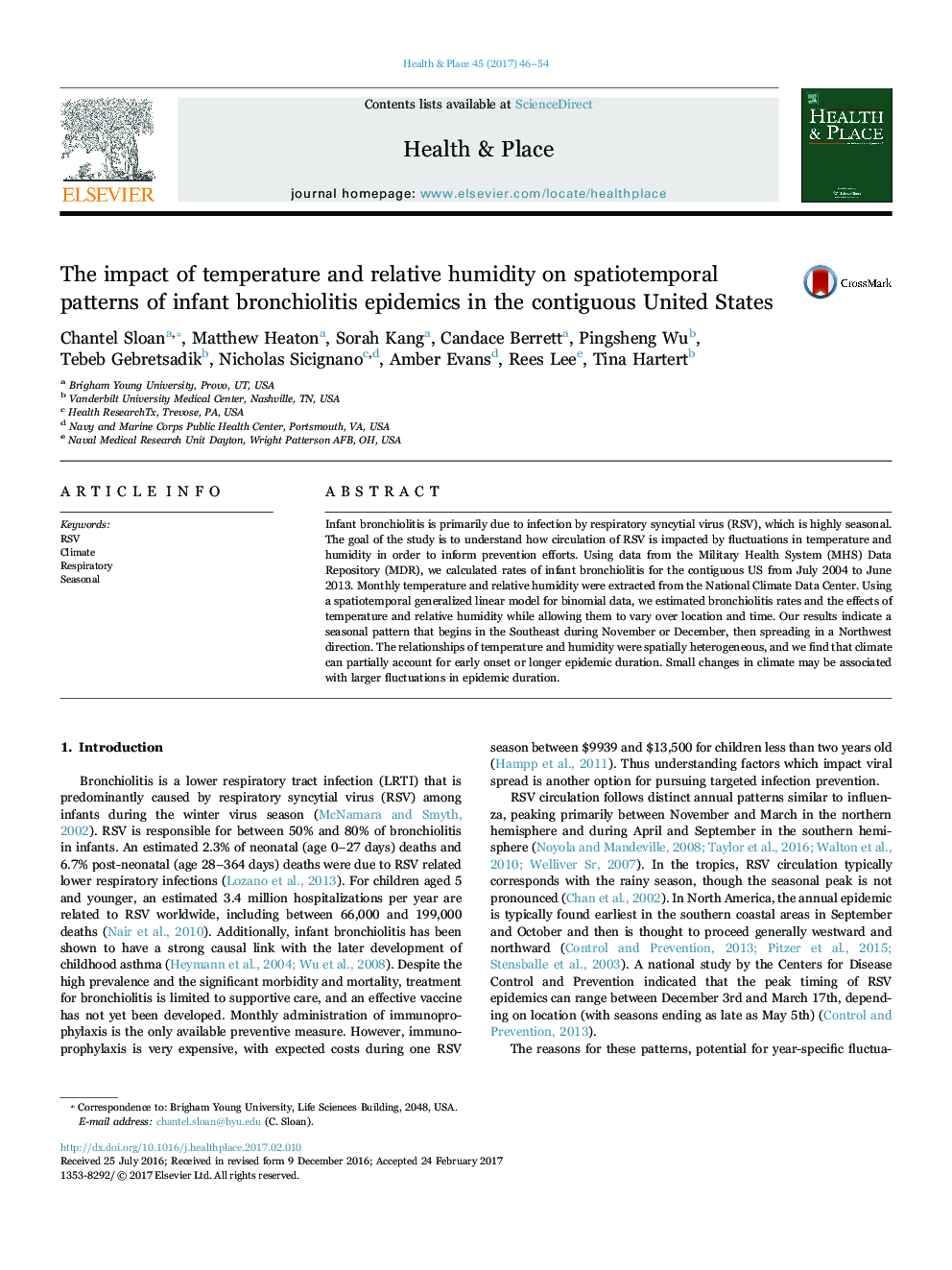| Article ID | Journal | Published Year | Pages | File Type |
|---|---|---|---|---|
| 5114794 | Health & Place | 2017 | 9 Pages |
Abstract
Infant bronchiolitis is primarily due to infection by respiratory syncytial virus (RSV), which is highly seasonal. The goal of the study is to understand how circulation of RSV is impacted by fluctuations in temperature and humidity in order to inform prevention efforts. Using data from the Military Health System (MHS) Data Repository (MDR), we calculated rates of infant bronchiolitis for the contiguous US from July 2004 to June 2013. Monthly temperature and relative humidity were extracted from the National Climate Data Center. Using a spatiotemporal generalized linear model for binomial data, we estimated bronchiolitis rates and the effects of temperature and relative humidity while allowing them to vary over location and time. Our results indicate a seasonal pattern that begins in the Southeast during November or December, then spreading in a Northwest direction. The relationships of temperature and humidity were spatially heterogeneous, and we find that climate can partially account for early onset or longer epidemic duration. Small changes in climate may be associated with larger fluctuations in epidemic duration.
Keywords
Related Topics
Health Sciences
Medicine and Dentistry
Public Health and Health Policy
Authors
Chantel Sloan, Matthew Heaton, Sorah Kang, Candace Berrett, Pingsheng Wu, Tebeb Gebretsadik, Nicholas Sicignano, Amber Evans, Rees Lee, Tina Hartert,
